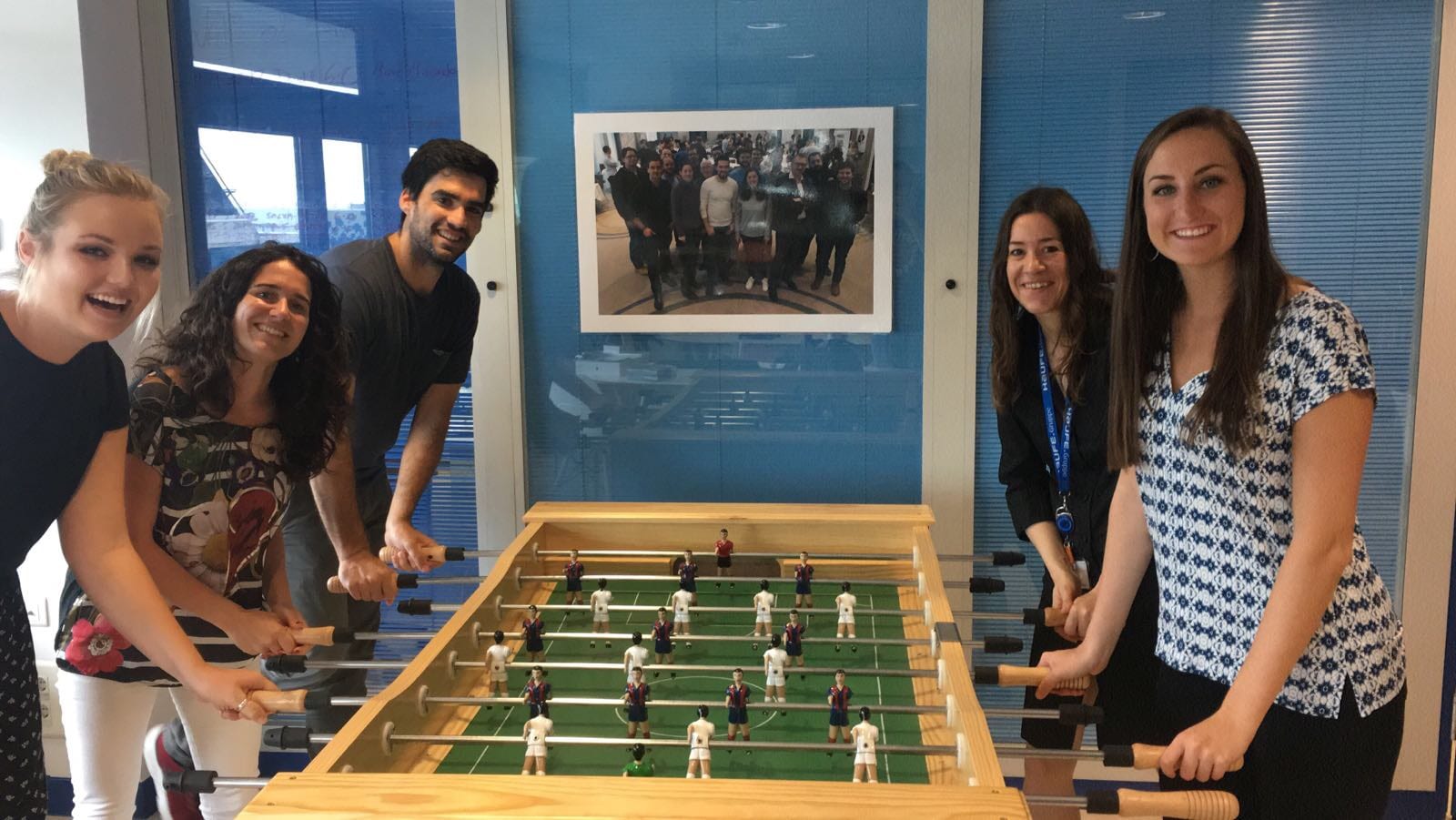
Related Posts

Why Every Student Should Study Abroad | Student Blog from Costa Rica

5 Ways to Pay for Study Abroad


If you’re going to study abroad in Costa Rica, congratulations! This is a great step for you, both academically and personally. You’ll see some amazing and beautiful places, meet wonderful people (Ticos/Ticas, fellow students, and more) and make lifelong connections discovering one of the most incredible countries in the world.




To help you get the most out of your trip and have the very best experience possible, here are my 10 tips for studying abroad in Costa Rica, some of which I knew before I went, and others which I learned while there.
1) Pack as few outfits as possible. Then take out a few articles of clothing, because you won’t need them. Seriously.
Everyone’s probably already telling you to pack light, but it’s true (and difficult). My checked bag was 38 lbs, which was well below the 50 lb limit, but it was still too heavy for me to easily carry. I noticed this especially after I picked up my checked bag in San Jose and had to carry it around the airport through customs. I brought clothes I didn’t wear, and books I didn’t read. It’s hard to pare down and bring just the necessities, but if I’d done that it would have been easier for me to carry my luggage across the airports and would’ve left me more room for souvenirs. (And I wanted more souvenirs.)
2) Make sure to bring your prescriptions and some over-the-counter medications with you, and pack them in your carry-on.
Get your prescriptions refilled before you leave so there’s no danger of running out while you’re abroad. It’s also important to bring everyday OTCs too–ibuprofen, tylenol, and an antihistamine (ex. benadryl)–in case you get a headache, fever, or have a mild allergic reaction. There aren’t any Rite Aids in Costa Rica! Keeping these items in your carryon will prevent you from losing them should you be separated from your luggage during flights. This happened to my parents one time on the way to a conference: they went to Florida, but their luggage accidentally went to Chicago. My Dad had to buy an all-new, business-appropriate wardrobe to attend his meetings, but his prescriptions, which would have been harder to replace, were not lost.
3) Embrace your homestay experience!
This is one of the very best parts of the CISabroad study abroad experience! I absolutely adored my host mother and the housekeeper. Being in a homestay allowed me to practice my Spanish with my host family and engage with them. Some of my favorite times were when Mama Tica’s extended family would visit and I could chat (or more accurately, listen to them chat) and participate in their cultural traditions. Ask your host family about cool places to visit, what restaurants to eat at, and what to pack on excursions, and how much money to bring. Ask them to help with your homework. Ask them about themselves, and tell them about you. You’re missing out if you don’t take advantage of your homestay.

4) Bring something from home with you for your host family.
It’s a nice gesture of goodwill and a great way to say “thank you” to your host family for the kindness and consideration they’re going to show you for the duration of your stay. I brought my host mom a dish and a towel with “Maine” things on them: loons, moose, pine trees, etc., to show her about where I was from. I also brought some pictures of my family to show her and wrote a short letter to help her get to know me. She really appreciated this and it helped us to connect: I showed her my brothers, sister, and parents, and she showed me her son, grandson, and nephews. It helped us get to know each other, right from the start.
5) If there’s something you want to do but you’re scared, do it anyway.
My CISabroad group went to Monteverde and ziplined through the rainforest my final weekend in Costa Rica. It was an incredible experience–the 100% Aventura staff were so good at what they did, I barely had to do any work at all. All I had to do was relax and glide over the rainforest. It was amazing to see the Costa Rican landscape from that height, flying across a wire above the rainforest canopy to get a true bird’s-eye view. I was so nervous before we started that I was shaking. I remember it pretty vividly because the guy strapping me into the gear asked me if I was ok, and all I could manage to say was, “Estoy nerviosa.” But once we got on the lines I felt completely safe and I loved every minute of it. I even did the Tarzan Swing at the end! I’d go back and do it again in a
was an incredible experience–the 100% Aventura staff were so good at what they did, I barely had to do any work at all. All I had to do was relax and glide over the rainforest. It was amazing to see the Costa Rican landscape from that height, flying across a wire above the rainforest canopy to get a true bird’s-eye view. I was so nervous before we started that I was shaking. I remember it pretty vividly because the guy strapping me into the gear asked me if I was ok, and all I could manage to say was, “Estoy nerviosa.” But once we got on the lines I felt completely safe and I loved every minute of it. I even did the Tarzan Swing at the end! I’d go back and do it again in a  heartbeat. Take advantage of EVERY opportunity Costa Rica offers you. Looking back, I wish I’d been more adventurous, less timid, and done more. Don’t let fear hold you back.
heartbeat. Take advantage of EVERY opportunity Costa Rica offers you. Looking back, I wish I’d been more adventurous, less timid, and done more. Don’t let fear hold you back.
6) Always carry your homestay address on you.
Some friends and I were in an Uber trying to get back to our homestays, but didn’t know the exact addresses. (Foolish, right?) In my experience, the cab/Uber drivers will know where you live if you tell them the name of your homestay, but this driver did not. We drove around in circles for a little bit trying to direct the poor guy left and right, and eventually found our way home, but it would’ve been MUCH easier had we just been able to give him our addresses. Ask your host family to write your address down on a piece of paper for you, program it into your phone, whatever–just make sure you have it with you!
7) Visit the artisan market in downtown San Jose.
One of the most fun places to try and practice your Spanish is at the artisan market in downtown San Jose, and odds are at least a little part of the reason you’re in Costa Rica is to learn some Spanish. Don’t be afraid to practice it! Locals, especially around San Jose, are used to English-speakers trying to speak Spanish to them, and the vendors at the artisan market are especially accustomed to this. At least some of them speak English themselves, and the best part is that even if your Spanish is absolutely terrible, they’ll still tell you “hablas muy bien!” because they want you to buy their wares and know that flattery works. I didn’t care–a compliment is a compliment, even if it does stretch the truth a bit– and I thought it was so much fun to ask things like “how much is this” and “where did this come from.” Additionally, the artisan market has some beautiful souvenirs and they’re more reasonably priced than the souvenirs in the more tourist-y destinations, like Tamarindo or Puerto Viejo.
8) Costa Rican time is different.
And no, I’m not talking about time zones. If you’re coming from the US (like I was) you’re used to things running at break-neck pace, and classes starting at exactly the time listed on your schedule. At my home university, I had a history professor who would lock the door when class started at 1:30 PM, and if you weren’t in your seat when he did, well, that was just too bad for you. In Costa Rica my Spanish professor would routinely arrive five-ten minutes late, no big deal. Costa Rican time is more laid back. Everyone isn’t always rushing everywhere like they often are in the States. If you give it a chance, you might enjoy the change!
9) Pedestrians, beware!
Costa Rican drivers are crazy. I’m not making this up–my host mother told me this, the CISabroad on-site director told me this, and my professor at Universidad Veritas told me this. They drive very fast; they do not “yield to pedestrians in crosswalk.” The CISabroad on-site director also told me this; if you have to cross the highway to get from your homestay to school, it’ll be a lot like playing frogger. Watch how the locals do it, and learn from them. Don’t step out into the street like you might at your home university or your hometown, assuming the drivers will stop for you, because there’s a good chance they won’t. Remember what you probably learned when you were a little kid: look both ways before you cross the street and once you’re in the road, don’t dawdle!
10) Become a CISabroad Alumni Ambassador when you get back!
It looks great on a resume and it’s good experience. Plus, you’ll want to share your great experiences with others and encourage them to take the leap like you did! As an added bonus, you’ll even get paid. Visit this link when you get back to apply to start your Alumni Ambassador experience.





This past semester, I studied abroad in Tokyo, Japan. I aimed to live by the quote "Life begins at the end of your comfort zone," and because of that, I have gotten to experience incredibly fascinating things and meet amazing people. Tokyo almost feels like a second home to me now. I am immensely thankful for the opportunity to have experienced the beauty of Japan and its rich culture.
Based on personal experience from my home University, Australia does not tend to be a popular destination for study abroad, likely due to its distance. However, I am extremely grateful I made the decision to come here. The geographical diversity, numerous cultural representations, and major cities so close to nature make Australia a truly unique and unforgettable country. Spending three and a half months here will be an experience I treasure for the rest of my life.
Everyday was something new. CIS provided a brilliant network of people so I never felt alone, but I got to explore a place completely different from anything I could have imagined. It was challenging, a new culture, a language I didn't know completely, a new place to navigate, but that was the beauty of it all. No one goes abroad searching for comfort, but you learn that comfort can be found anywhere, if you know how to look.
Studying abroad has allowed me to grow as a person. I have conquered fears, experienced new things, tried new foods, and met wonderful people who helped make my experience unforgettable. I am more confident in myself and the person that I want to be in the future.
Studying abroad in London has been an experience I will never forget. Living in a new country is something I think everyone should experience in their life. I've made so many new life long friendships I never would have unless I came here. I've also grown so much as a person and become more independent. The CIS team has been so supportive during the whole process. From applying to my program to arriving on campus in London. My site directors have been so helpful and supportive answering any questions I have. The social program activities were amazing and helped me see a different side of London than I would have without it. I will never forget this experience it really has changed me for the better.
Studying abroad changed my life in all of the best ways and CIS Abroad made it all happen!! Through CIS I was able to make my first friends and integrate into the culture way easier than I would have on my own.
My time abroad has been the most eye opening journey and I’m a more independent person because of it. I’m so grateful for all the experiences, friends, and memories I’ve made along the way!
Unlike many people on this trip who come with the intention of being a tourist, I feel like I had a different goal. I wanted to rediscover my culture and where I belonged. Being a hafu living in America and not fluent in Japanese, I was never really able to get in touch with my Japanese heritage. This trip completely changed that and I now have a goal of one day living in Japan for the rest of my life.
The CIS program was truly a one of a kind experience. I was able to meet many students from all across America, attend several events (such as food tours or a trip to Kyoto), and make many friends. I would not trade it for anything. I am thankful I decided to study with CIS Abroad. Before this, I was thinking about just plowing through my degree, getting my master's and PhD, and immediately entering society. However, this experience changed my life. Through meeting many people from many places, and living in a new area for an extended period of time, my view of my own philosophies, culture and place of living, changed. This would not have happened if I stayed in the states. I would say if you are able to go, you should go. There is no time like the present.
I spent the past 4 months in Tokyo, Japan and it has been a life changing experience. I have been on so many new adventures and met people who I will never forget. This trip really helped me grow as an individual and I cannot wait to see what adventure I go on next!
Studying abroad in Japan was lifechanging! Embracing a rich culture, forging international friendships, and gaining valuable insights broadened my perspective , fostering personal growth and unforgettable memories.
I knew I wanted to study abroad, particularly in Japan, because it was on my bucket list. Thanks to CIS, I was able to go to Tokyo! Even now, it is surreal to me that I got to go! I can't put it into words how much fun I had in Tokyo. I enjoyed every second of my time there, from walking around the bustling streets of Shibuya and Shinjuku to going to class, eating delicious Japanese cuisine, and even going to the convenience store. Even the simplest things were incredibly fun to me. I was initially anxious about being homesick, my Japanese skills and traveling alone, but I'm happy to say that I very quickly made lovely, lifelong friends and was met with nothing but kindness from the locals. I learned not to let my worries get in the way of an opportunity of a lifetime. Thank you, CIS Abroad. I am eternally grateful for the opportunity I had to go to Tokyo.
During my time in Costa Rica, I took Intermediate Conversation and Cultural Photography at Veritas University. I really enjoyed how relaxed the classes were and how the teachers taught us not only Spanish, but also culture and day-to-day life. I was also involved in the biology lab here (BIOMOL) and had fun doing some lab work every week. Not only with classes, I got to explore multiple places with my program, such as Manuel Antonio, Curubandé, and Jaco. I went surfing for the first time and got to hike some amazing trails. I highly recommend traveling to Costa Rica for study abroad; it is a beautiful country with beautiful people and memories to make!
I took Spanish for Healthcare Professionals and Conflict Resolution & Healthcare at Universidad Veritas in San Jose, Costa Rica. I really enjoyed how interactive my elective class was; the students often led the class by doing presentations on various topics. We also had a field trip to the local school. My favorite part of the study abroad experience was all the weekend trips. It was awesome to see so many different places in the country. My favorite trip was to Tamarindo and Curubande where I got to take a surf lesson and hike to waterfalls.
This past month I spent my time studying abroad in Sorrento, Italy with CIS Abroad. The opportunity of being able to study in Italy was a dream come true! From my peers in the program to Frankie and Kayla, everyone has been so open and welcoming. CIS has done any amazing job making sure I felt prepared for my travels and was available to answer my many questions. Without CIS, this opportunity would have seemed like a dream, but they helped me turn it into a reality. I have met some amazing friends and grown into a better person during my time in Sorrento!
